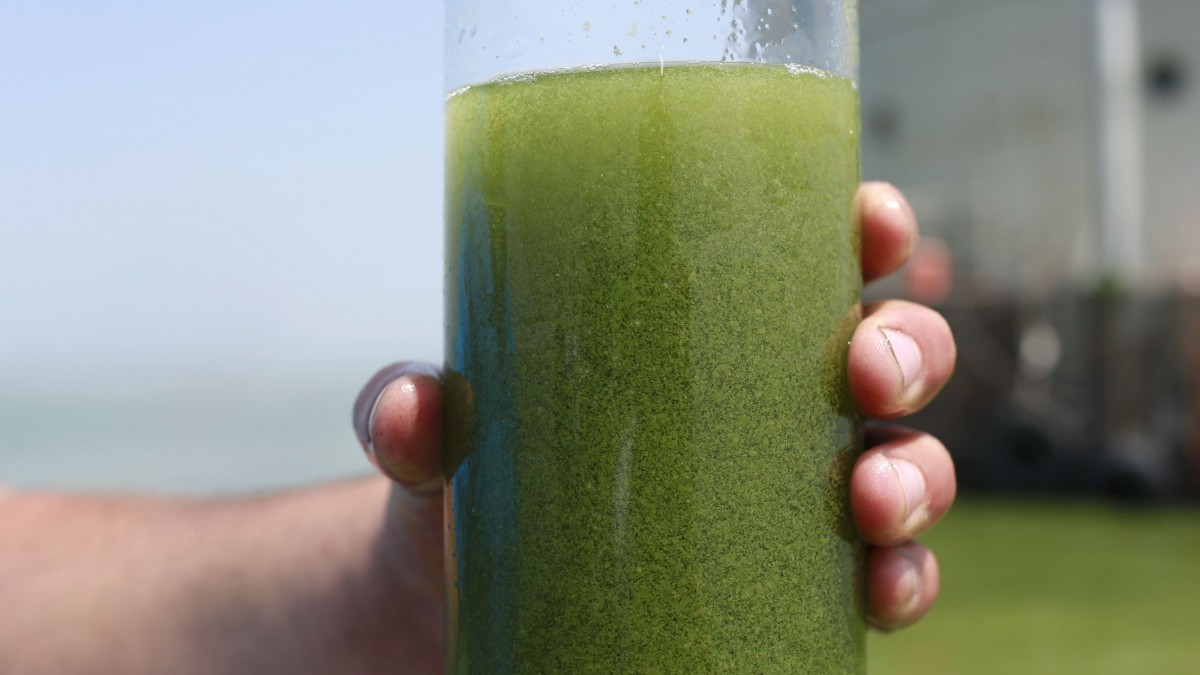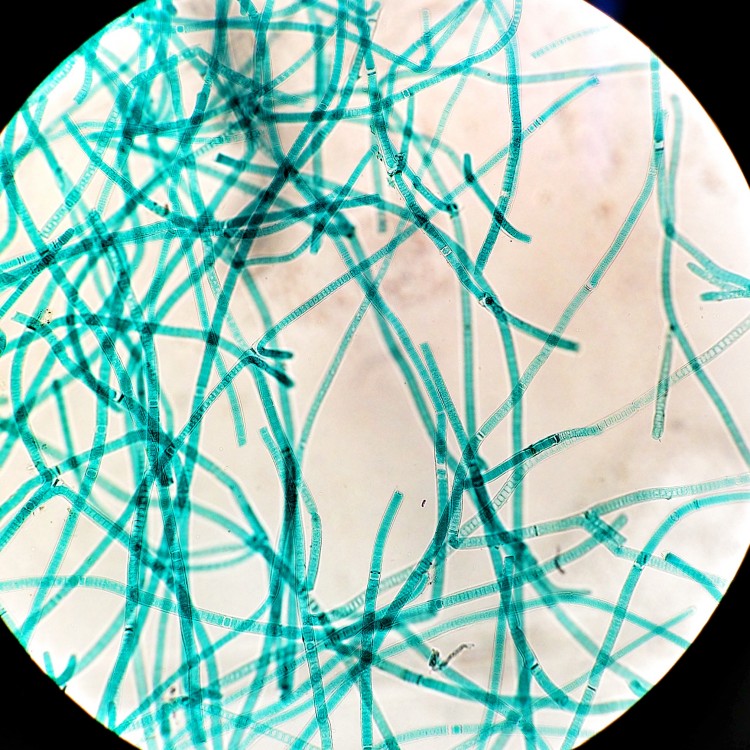
Toledo's recent water crisis isn't unlike this year's water-related crises in West Virginia and Detroit. As in those other events, the poisoning of Toledo's water is ultimately tied to corruption at the highest levels of state government by corporate special interests.
Freedom Industries's toxic chemical spill in Charleston's Elk River in January, which poisoned drinking water for 300,000 people, was a direct result of West Virginia's state government deregulating coal, the state's top industry, and selective enforcement of environmental laws when it concerns big campaign donors in the coal business.
In Detroit, the poorest 40 percent of the city stood to lose water in their homes – something the UN has declared a basic human right. The Detroit water shutoffs were proposed by an unelected emergency manager who singlehandedly made the decision to pay off big foreign banks with $537 million meant for city water infrastructure, while making the most vulnerable foot the bill.
Toledo's water crisis would never have happened if agricultural runoff had been properly regulated – and if Ohio's government hadn't systematically diverted tax dollars meant for cities and counties to upgrade infrastructure, meanwhile rewarding corporations and the rich with more tax breaks.
Public Health at Risk
So just how bad is the water in Toledo?
On August 5, Scott Smith, chief scientist of the non-profit Water Defense, ran water from the shower and kitchen sink at the home of Toledo resident Kelly Hanna, collecting a sample to test at the group's labs in Massachusetts. Hanna’s home, which has no charcoal water filter, draws its water from Toledo’s water treatment plant. Hanna and 500,000 other people in the Toledo area were under strict warnings for the previous two days not to drink or bathe in municipal water.
As Smith collected the water samples, a Water Defense videographer told him that the city's mayor had just declared the water safe to drink – even drinking a glass of city tap water on live TV.
“Well, God bless the mayor,” Smith said.
Then, on August 8, Smith tweeted that elevated levels of chloroform were found in the water sampled from Hanna’s home, after the city had lifted the water ban. Smith didn't answer my phone calls for several days due to suffering a fever that reached as high as 104 degrees, which just broke early yesterday. Smith's doctor told him the fever was a direct result of cyanobacteria-infested water splashing into his mouth while Smith was chest-deep in Lake Erie collecting water samples.
"This cyanobacteria is just as bad as anything I've seen in any oil spill," said Smith, who has been on the ground in over 50 major water-related disasters around the world. Full lab results of water samples in Toledo are expected to be posted on Water Defense’swebsite in the coming days.
This news is particularly shocking given that Toledo Sewage and Drainage Commissioner Ed Moore assured me that the city did complete tests on the entire water column, and tested for all volatiles and non-volatiles, metals and metalloids, at the city’s water testing plant. He also assured me that the city would coordinate with Water Defense, which dropped several testing buoys in Lake Erie and near the city’s water intake, and compare their test results. It’s still unconfirmed whether or not the city followed through on that promise. You can see photos of Water Defense's testing process here.
A Recurring Problem
At a public forum in early August featuring top academics and scientists at the University of Toledo, Carol Stepien, director of the University’s Lake Erie Research Center, dropped an ominous warning on the several hundred gathered.
“Stock up on water, because this will happen again,” Stepien said. “Be prepared.”
Toledo residents had been told to not drink their water for over 2 days starting on August 3, after a swath of cyanobacteria collected right on top of the city’s water intake. Mistakenly referred to as “blue-green algae,” the cyanobacteria produces toxins that make water unsafe to drink, bathe in or even boil. Killing cyanobacteria prompts it to produce even more toxins, so the only real solution is to starve it of its food sources, largely from phosphorous runoff.
The toxic cyanobacteria is fed by fertilizers in agricultural runoff in the Maumee River Watershed, which is heavily dominated by corn, soybean and wheat crops. Another big contributor to increased runoff is controlled animal feeding operations (CAFOs), better known as factory farms. Environmentally-Concerned Citizens of South Central Michigan estimates that 6,000,000 pounds of phosphorous runs off into Lake Erie from the watershed every year, 80 percent of which comes from agricultural sources. Monsanto has a soybean research facility in Findlay, Ohio, on the eastern edge of the watershed.
The problems resulting from phosphorous runoff are exacerbated by climate change, in which longer, wetter summers prolong the blooms of cyanobacteria. High volumes of rain, which have been pounding the Toledo area all summer long, also help feed the cyanobacteria. Normally, the toxic algal blooms in Lake Erie don’t peak until late September, meaning there could be another drinking water crisis in Toledo in the next month.
“It may or may not happen again soon,” Ed Moore said. “We just don’t know.”
A Lack of Regulation
Currently, the state of Ohio effectively has no regulations in place for agricultural industry to curb the amount of runoff produced. The only existing guidelines are incentive-based. Carol Stepien of the Lake Erie Research Center alluded to a recent report by the U.S. and Canada-led International Joint Commission, or IJC, called A Balanced Diet for Lake Erie: Reducing Phosphorous Loadings and Harmful Algal Blooms, which includes multiple guidelines for reducing phosphorous runoff. The report states that phosphorous levels must be reduced by 50 percent, and done sooner than the previous IJC deadline of 2018.
The IJC’s key recommendations include multiple strict regulations on agribusiness, such as mandating the restriction of phosphorous-based fertilizer to be used only between March and June, and prohibiting the spreading of fertilizer on frozen ground. It also calls for using the Clean Water Act as justification for deeming the Western Basin of Lake Erie as “impaired,” triggering states surrounding Lake Erie to immediately enact a maximum daily load of phosphorous with EPA oversight. And most importantly, the report calls for spending more tax dollars on upgrading water treatment facilities, drainage systems, and septic systems, as well as mandating regular inspections of those facilities.
However, implementing such regulations in Ohio seems unlikely, given the breadth of influence the Ohio Farm Bureau (OFB) has on the state government. The OFB has a presence in all 88 counties in Ohio and fiercely opposes any new regulations on agricultural and livestock operations.
In April of 2013, the OFB wrote a 6-page critique of draft legislation to regulate agricultural nutrients and fertilizers. OFB lobbyists insisted on limiting regulations to suggestions and incentives, and urged legislators to allow farmers a "safe harbor" when operating within existing standards defined by the agricultural industry. Senate Bill 150, which Gov. John Kasich signed into law in May, requires farmers become certified to disperse fertilizer, after undergoing a brief training course about "best practices." However, the actual dispersing of fertilizer remains completely unregulated. Unless Ohio’s legislators want to anger the largest agricultural lobby in the state, free-for-all farming practices will likely continue, further polluting the Western Basin of Lake Erie.
The Ohio Farm Bureau's very early input on draft legislation concerning runoff regulation raises the question of whether or not the agricultural industry in Ohio is getting to write its own rules. Such a practice is eerily similar to how the American Legislative Exchange Council, or ALEC, allows corporations to write pro-business model legislation to be introduced in statehouses across the nation. And as Alan Greenspan's policy of letting the banks regulate themselves has shown, self-regulation is no regulation at all.
Crumbling Infrastructure
Toledo’s main water intake and water treatment plant hasn’t been updated since 1941. The city was half its current size at the time current water infrastructure was built. The Ohio EPA has threatened to take over the water treatment plant in the past, citing a lack of care given to longstanding documented problems.
“We obviously have very strong concerns about the operability and the long-term capability of that plant,” Ohio EPA director Craig Butler told the Toledo Blade.
It would cost roughly $300 million to provide needed repairs to the water plant that ensure future algal blooms wouldn’t endanger the city’s drinking water. But rather than fund local infrastructure, Gov. Kasich, elected in the Tea Party wave of 2010, decided to give state tax dollars to the rich. Kasich's proposed income tax cuts come at a cost of $2.2 billion, which is almost eight times the cost of a new water treatment plant in Toledo. When Kasich first took office, he offered $400 million in state tax incentives for Sears to relocate its headquarters from Illinois to Ohio in late 2011. (Sears declined the offer.) By bending over backwards to give handouts to corporations and the ultra-rich, Kasich has seriously deprived local and county governments of badly-needed funding for infrastructure upgrades.
More Cuts to Local Governments
In the first budget he signed after being elected, Kasich cut aid to local and county governments by over $1 billion. Lucas County, which houses Toledo, has its state-based aid cut by $70 million in the last biennial budget. All of these cuts juxtaposed with Kasich's welfare for corporations and the rich makes it easy to connect the dots in what Kasich's true funding priorities are. Gov. Kasich'sincome tax proposal, which the legislature recently passed, cuts taxes for the wealthiest 1 percent by over $10,000 per year, and raises taxes on the bottom 20 percent of Ohioans by an average of $63. After his elimination of Ohio’s estate tax for the wealthiest families, cuts are expected to deepen in coming years.
Contrast Toledo’s crumbling water system with infrastructure in San Francisco, which prioritizes upgrades to its water infrastructure. The city’s Water System Improvement Program, or WSIP, was launched in 2007 and has since replaced more than 280 miles of pipeline, built new dams and reservoirs and put 11,000 people to work. WSIP’s current water system upgrades can be viewed here. The $4.6 billion project is at 80 percent completion.
When it comes to taxation, California’s state government has taken an opposite approach to taxes than Ohio’s government. While Gov. Kasich pledged to cut Ohio’s income tax by 8.5 percent in 3 years, California voters approved statewide tax increases in 2012 that have since made the state third in job growth, and led to the first operational surplus in decades. Kansas tried a similar tax-cut approach to Ohio, and its economy has been decimated as a result. By further pushing austerity economics onto its citizens, Ohio's cities will continue to see its infrastructure deteriorate. This means Toledo will keep having to ban the consumption of city water, leading to greater costs down the road.
In an election year like this one, the drinking water crisis in Toledo could be a turning point for Kasich and local politicians to seriously address the problems created by climate change, provoke more dialogue about regulating agribusiness in Ohio and shift the conversation about spending towards helping local governments so they have the resources they need to protect citizens from natural disasters. However, it could also be just as easily ignored in the desire to please powerful agricultural lobbies like the Ohio Farm Bureau and wealthy campaign donors averse to paying more taxes.
“We know what the problems are,” Carol Stepien said. “Now it’s up to us whether or not we have the will to solve them.
This is the first article of a two-part series. Stay tuned for the second installment next week.
3 WAYS TO SHOW YOUR SUPPORT
- Log in to post comments
















